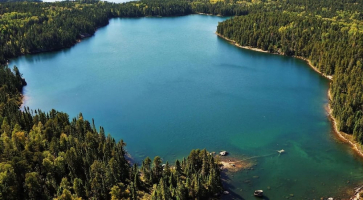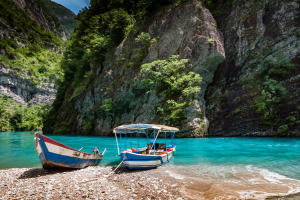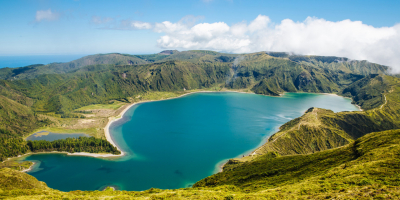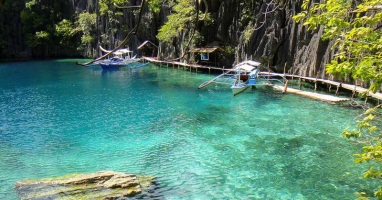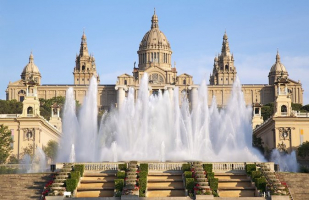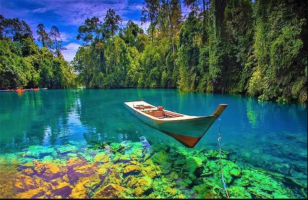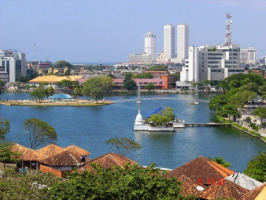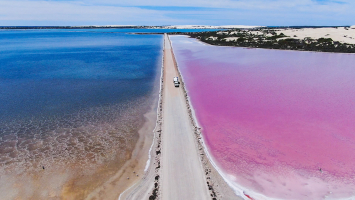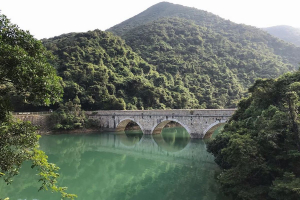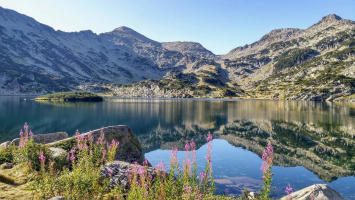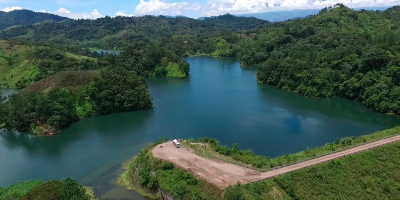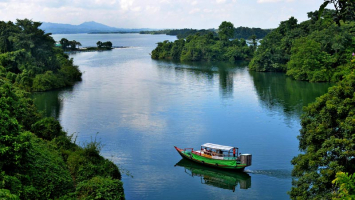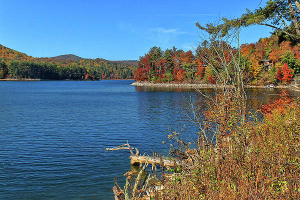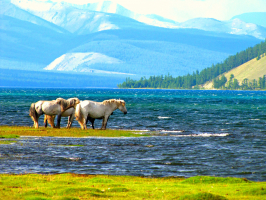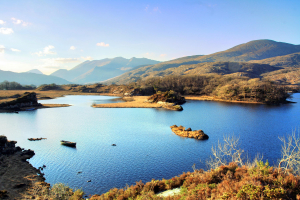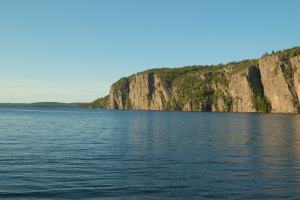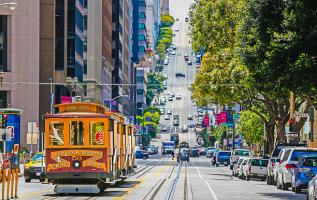Top 12 Most Beautiful Lakes In Europe
The lakes are the ideal summer destination for those who want a place to relax and cool off without having to descend to cramped beach destinations. In the ... read more...vast region of Europe, there is no shortage of beautiful lakes. Let's join Toplist to discover the most beautiful lakes in Europe!
-
One of the most beautiful lakes in Europe is Lake Como commonly referred to as Lario, which is a glacial lake in the Italian region of Lombardy. It is the third-largest lake in Italy, behind Lake Garda and Lake Maggiore, with a surface area of 146 square kilometers. The lake's bottom lies more than 200 meters below sea level, making it the fifth-deepest lake in Europe and the deepest one outside of Norway. Since Roman times, aristocracy and wealthy people have used Lake Como as a getaway. Today, it is a very famous tourist destination with many important works of art and cultural treasures. There are numerous palaces and mansions there, including Villa Olmo, Villa Serbelloni, and Villa Carlotta. Numerous well-known people have resided near Lake Como and still do.
Since Pliny constructed his palace on its eastern bank during the Roman era, the affluent have flocked to frolic at glitzy Como, the cover-girl of Italian lakes. Hollywood celebrities now pick it as their getaway retreat. The stylish and picturesque town of Bellagio is located at the point where the long, narrow Como separates into two arms at the southern end, giving it the shape of an inverted Y.
The former Roman city of Como, which is located at the base of the lake and is accessible to Milan by train, is best known for its spectacular Romanesque cathedral and its cable car that ascends to provide views of the lake and the surrounding snow-capped Alps.
Location: Lombardy, Italy
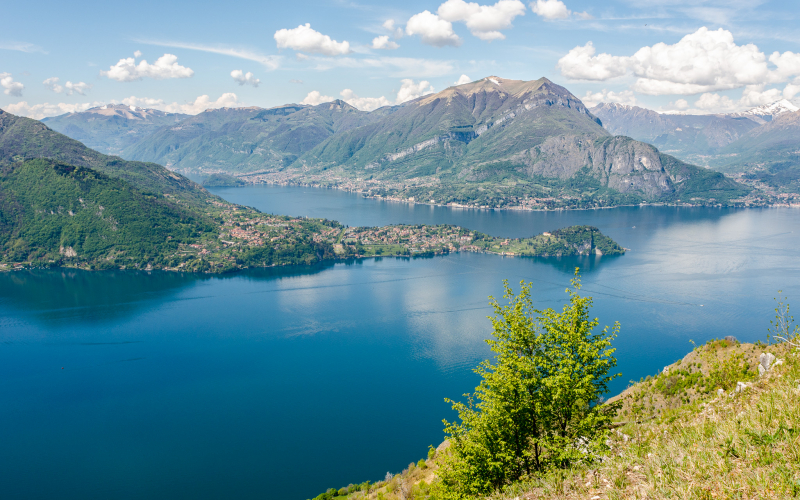
Photo: wikipedia 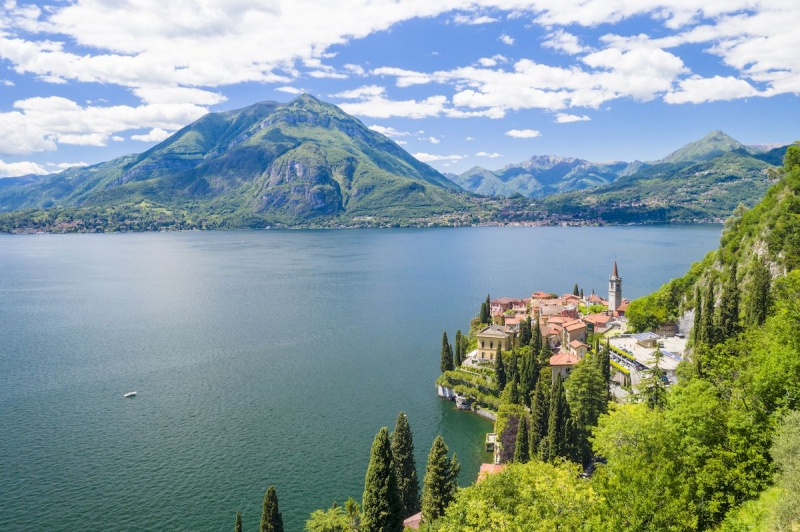
Photo: treehugger.com -
On the north side of the Alps, Switzerland and France share the deep lake known as Lake Geneva. It is the largest lake along the Rhône's course and one of the largest in Western Europe. The cantons of Vaud, Geneva, and Valais in Switzerland own 60% of the lake, while France owns 40% of it.
Right on the line separating France and Switzerland is the crescent-shaped Lake Geneva, which is situated in the Alps. Lake Geneva, the greatest body of water in Switzerland, draws tourists all year long. They come here for a variety of activities, such as sailing, exploring the narrow cobblestone alleys, and shopping for antiques.
The western bank of the lake, which faces Mont Blanc's snow-capped summits, is among its most beautiful features. Large historical paddle steamers were able to navigate these waters and connect settlements thanks to Lake Geneva's astounding 310-meter depth. There are 116 beaches around the shores of Lake Geneva, and the majority are open to the public and cost nothing to use.
The lake's waters are warm enough for swimming and other water activities between June and September, despite being surrounded by the snow-capped Alps.Location: on the north side of the Alps, shared between Switzerland and France
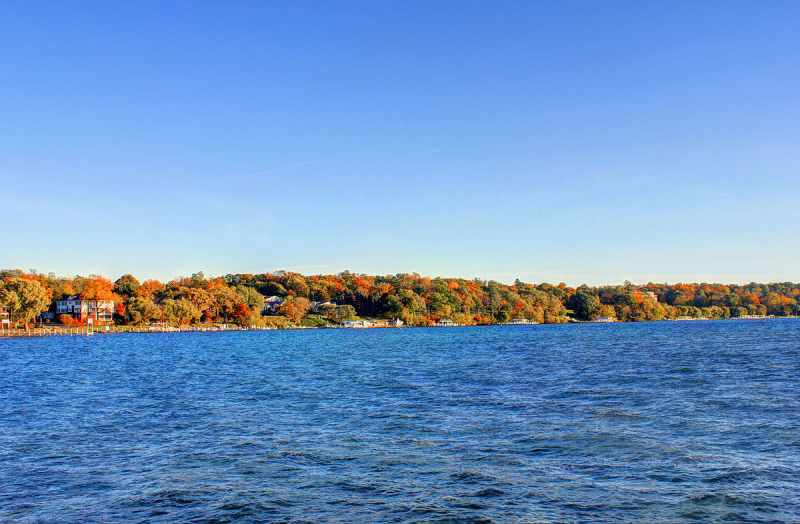
Photo: duhoctrungquoc.vn 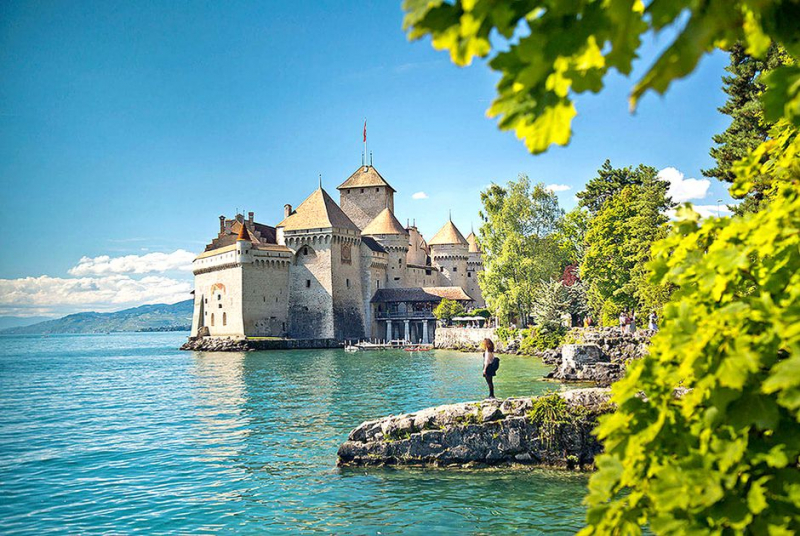
Photo: yeudulich.com -
One of Lake Bled's numerous charms is its bluish-green waters. The lake, which is situated in Slovenia's Julian Alps, is most well-known for its little island in the middle of it. Here, the 16th-century bell tower of the historic Bled Castle towers above a cliff, providing enchanting views of the nearby tranquil waters. In the summer, a traditional "pletna" boat, resembling a gondola, can take you to the castle; in the winter, the lake is frequently frozen over.
The abundance of hiking, biking, and water sports activities near Lake Bled draws visitors, however, the area's backdrop of dense forests and snow-capped peaks is also attractive. A six-kilometer, mostly paved trail circles the lake, although those seeking more difficult hiking can go to Triglav National Park, which is readily accessible from the lakeshore.
Since the early 20th century, the region around the lake has been regarded as a premier health resort destination. Thermal springs are still accessible in the northeastern portion of the lake today, and guests can stay at a historic hotel on the shore to have wellness treatments or make use of the private beach. Lake Bled is one of the most beautiful lakes in Europe.
Location: Julian Alps, Slovenia
Video: https://www.youtube.com/watch?v=WMtUZRjTtsM 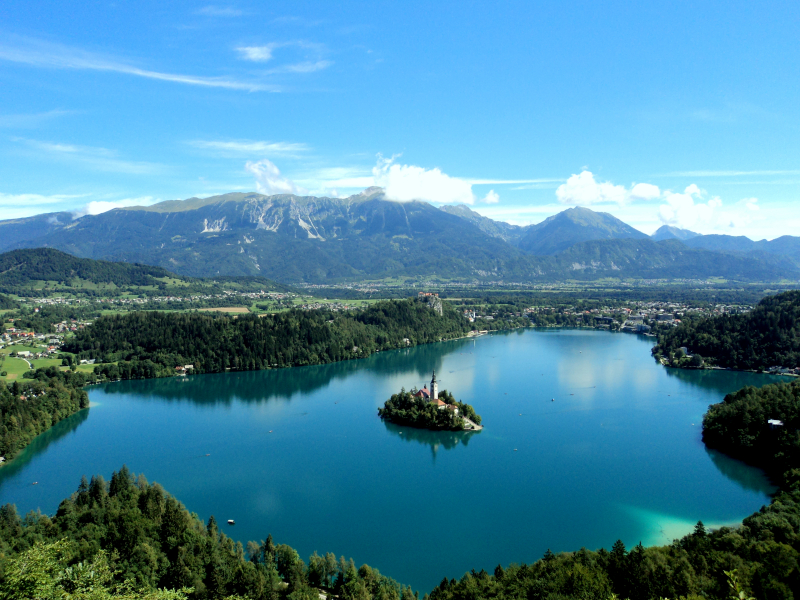
Photo: wikipedia -
The Slovene government declared the region's signature meal, a cream pastry, as a protected dish of designated origin in 2016. Although there are Slovene cream pastries that date back to the Habsburg era, Itvan Lukaevi, the former pastry manager at the Hotel Park, developed the present "official" recipe in 1953. The pastry is honored at a yearly celebration. Over the previous 60 years, the patisserie at the Hotel Park is thought to have produced 12 million cream pastries.
Lake Hallstatt is one of Austria's most beautiful waterscapes, dating back to the Ice Age. The modest, charming Alpine community that the lake is named after is opposed. The lake is a popular location for scuba divers because of its 125-meter depth, clean waters, and diverse ecosystem. Additionally, rowing and pedal boats can be rented. Those who enjoy climbing can proceed to the nearby steep slopes of the Dachstein karst mountains.
Over a million people visit Lake Hallstatt annually, and the months of July and August can be crowded both in the water and on the little beaches that border the shores, such as Obertraun. Consider going to Hallstatt in the winter for a whole new experience; when it snows, the 800-person Alpine community transforms into a winter wonderland.
Location: Salzkammergut region, Austria
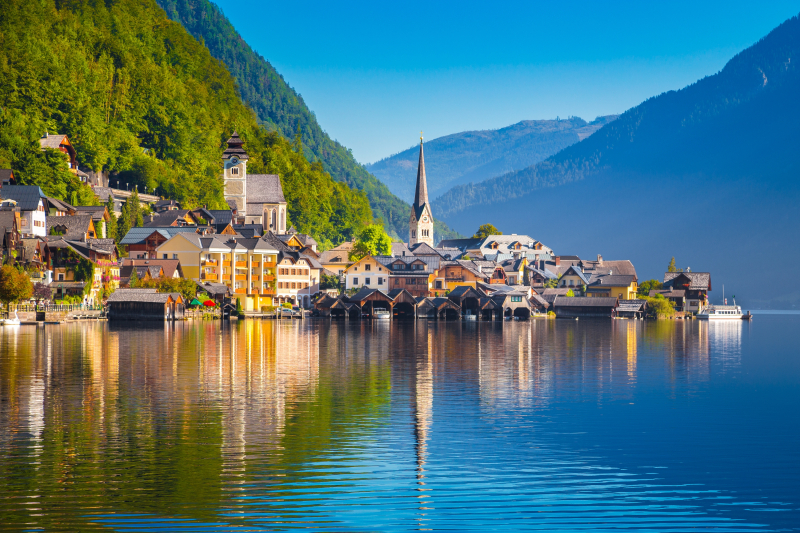
Photo: vn.trip.com 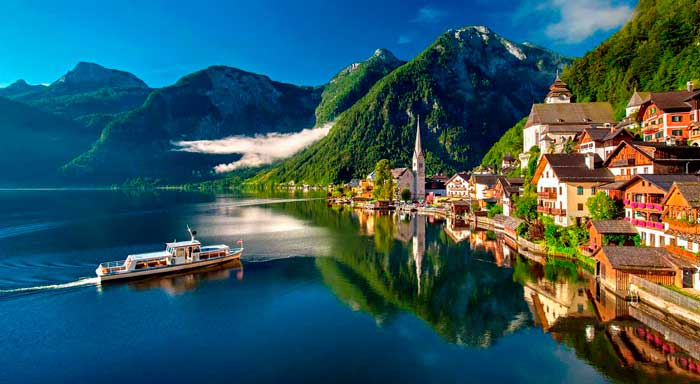
Photo: smartwatermagazine.com -
The next position on the list of the most beautiful lakes in Europe is Lake Lucerne. The fourth largest lake in Switzerland is located in the country's central region. Archaeologists discovered the ruins of a Bronze Age settlement with artifacts dating to roughly 1000 BC while surveying the lakebed (during the construction of a pipeline) between 2019 and 2021. Later, fresh discoveries showed that the region was settled 2,000 years earlier than historians had believed.
One of the most beautiful lakes in Europe is Lake Lucerne, also referred to as the Lake of the Four Cantons. The finest way to experience the majesty of the snow-covered winter scenery is probably to cruise Lake Lucerne on a vintage paddle boat.
The many musical and gastronomic events that take place around the lake during the warmer months can also be enjoyed by visitors. They can also experience the skating and cycling pathways that run along the coast, go antique shopping in Lucerne town, and try the cycling and skating trails. The 114 square kilometer lake itself is encircled by sharp peaks. Around the lake are some of the oldest settlements in Switzerland.
Location: Central Switzerland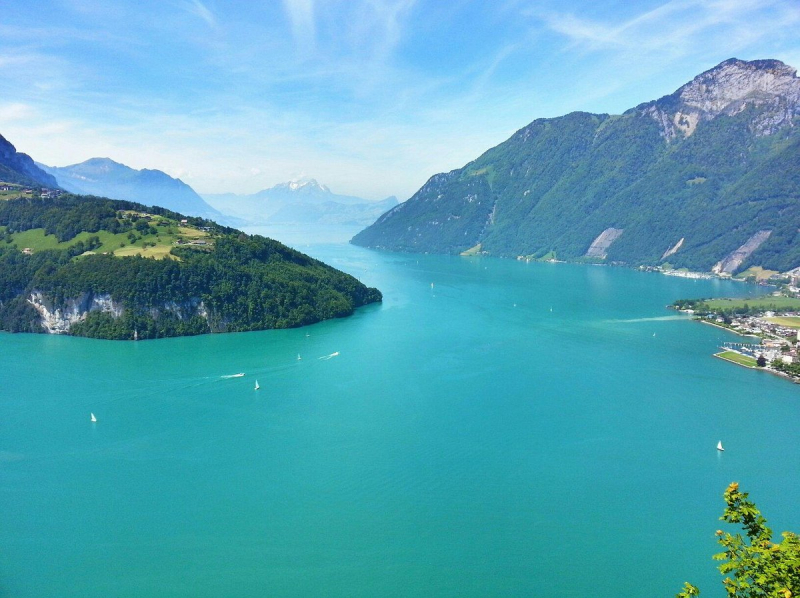
Photo: tripadvisor.com Video: https://www.youtube.com/watch?v=FYRqW-MQ7EQ -
The largest and oldest national park in the Republic of Croatia is the Plitvice Lakes. This region has traditionally drawn nature enthusiasts because of its extraordinary natural splendor. As a result, on April 8th, 1949, it was designated as the Republic of Croatia's first national park. When Plitvice Lakes was added to the UNESCO World Heritage List on October 26, 1979, it was recognized for its remarkable universal value in the process of tufa creation, which creates tufa barriers and lakes as a result.
There are sixteen lakes in Plitvice National Park, which are connected by a number of waterfalls. Natural dams full of moss and algae divide the lakes and combine with mountain runoff to produce a range of watercolors, including azure, green, silvery gray, and blue. The colors of the lakes change throughout the day as the sun reflects off the water at various angles.
The over 300 square kilometers park has seven different pathways to explore, and Plitvice offers great natural beauty that begs to be discovered. The park is extremely forested, and there are routes that meander through the forest, across wooden bridges, and in the direction of caverns and mountains.
Location: Lika-Senj County and Karlovac County, central Croatia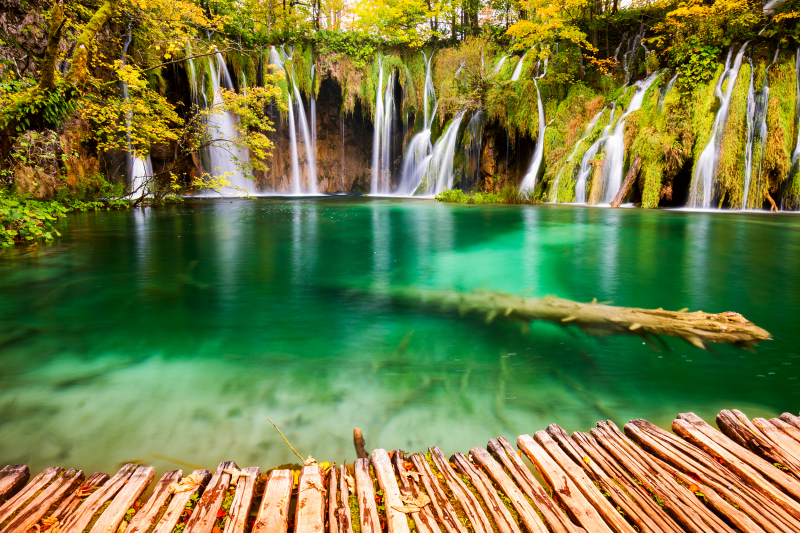
Photo: trip.com 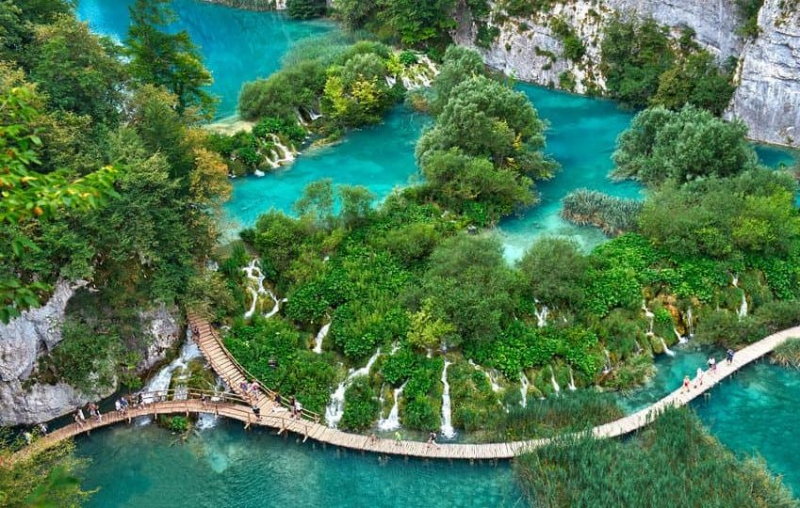
Photo: onhisowntrip.com -
French Haute-Savoie is home to the alpine lake known as Lake Annecy. It has the name of Annecy, the place where the Thiou, the river that drains Lake Annecy, begins.
If the French portion of Lake Geneva, which is split by Switzerland and France, is deleted, it is the third-largest lake in France, behind the Lac du Bourget and Lac de Grand-Lieu. Due to the environmental laws put in place in the 1960s, it is referred to be "Europe's cleanest lake". It is a well-liked vacation spot recognized for its swimming and water activities.
The third-largest lake in France is known as one of the cleanest lakes in Europe and is located in the heart of the French Alps. Compared to other European lakes, Lake Annecy is shallow (only 82 meters deep), but it makes up for it with stunningly beautiful, blue waters that are ideal for swimming.
Numerous sandy beaches and snow-capped mountains surround Lake Annecy. As you tour the several medieval villages along the lakes, you'll notice an even more beautiful contrast of colors and textures. With the surrounding valleys and mountains ideal for cross-country skiing, snowshoeing, and even paragliding on sunny days, Lake Annecy becomes a winter wonderland in the winter.
Location: Haute-Savoie, France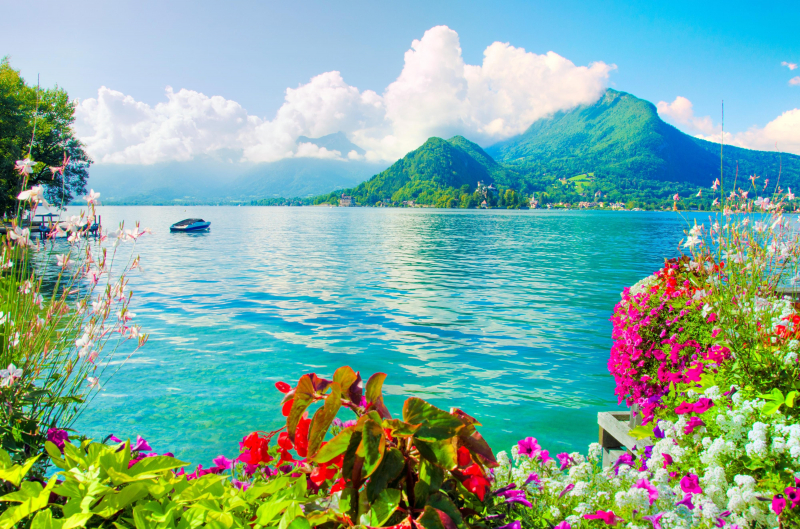
Photo: vn.trip.com Video: https://www.youtube.com/watch?v=5qmWoXia7fU -
Italy's largest lake is Lake Garda. It is a well-liked vacation spot in northern Italy, on the edge of the Dolomites, halfway between Brescia and Verona and between Venice and Milan. At the end of the previous ice age, glaciers created this alpine area. The provinces of Brescia, Verona, and Trentino share the lake and its shoreline.
Garda is primarily known as the playground lake, despite the fact that its northernmost portions are almost as stunning as Lake Como. Nearly every freshwater sport is available here, and at its northernmost point, Torbole, you can enjoy some of the best kite- and windsurfing in Europe. The lake's winds make sailing a favorite activity, while kayaking is more common in its calmer southern waters.
A moderate environment makes the region around the lake an ideal destination all throughout the year. It's also one of the factors that make Lake Garda, with its clear, blue waters, such a well-liked vacation spot for beachgoers and swimmers, as well as avid kayakers and windsurfers.
Location: between Brescia and Verona, and between Venice and Milan on the edge of the Dolomites, Italy
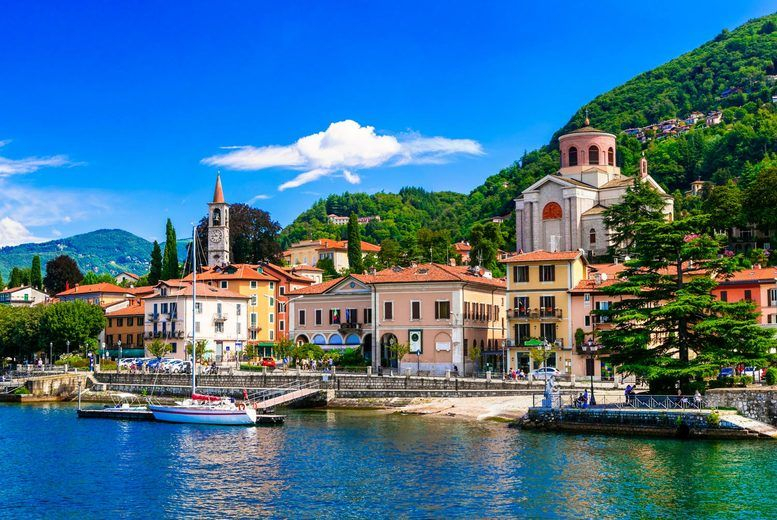
Photo: livingsocial.co.uk 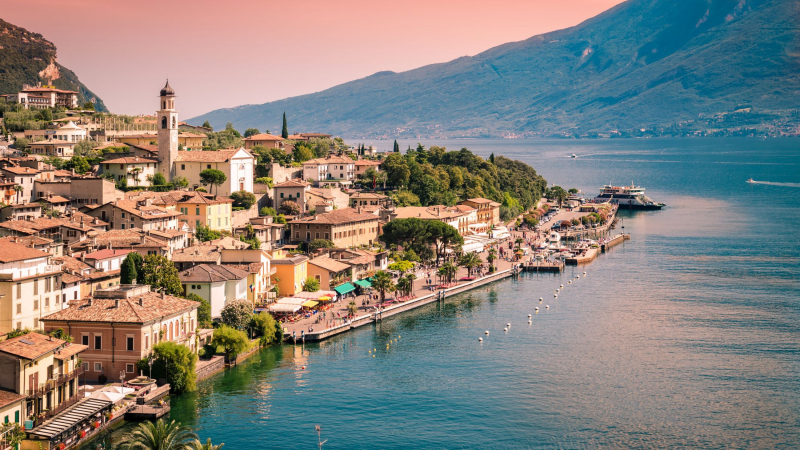
Photo: citalia.com -
The sandstone MacGillycuddy's Reeks, Ireland's tallest mountain range, surround the three lakes in Killarney National Park: Lough Leane, Muckross Lake, and Upper Lake.
Muckross Lake, Ireland's deepest lake, is 75 meters deep, yet the lakes are only 20 meters above sea level since they are buried deep within a valley. A 10-kilometer hiking track surrounds Muckross, making it a popular hiking location.
The largest of the three lakes, Lough Leane, is home to numerous islands, some of which are small and covered in dense forest and others of which are home to abbey ruins and Copper Age archaeological sites. The historic Ross Castle is not only a fantastic spot to visit, but it's also the ideal location to rent a boat so you can explore the area on your own. You can also go on a kayak tour with a guide as the sun sets over the tranquil waterways during the summer.
But driving away from the lakes is one of the best ways to take in their genuine splendor. Ladies View, a picturesque vantage point and one of Ireland's most well-known photo locations, is located just over 19 kilometers from the lakes.Location: Killarney, County Kerry, Ireland
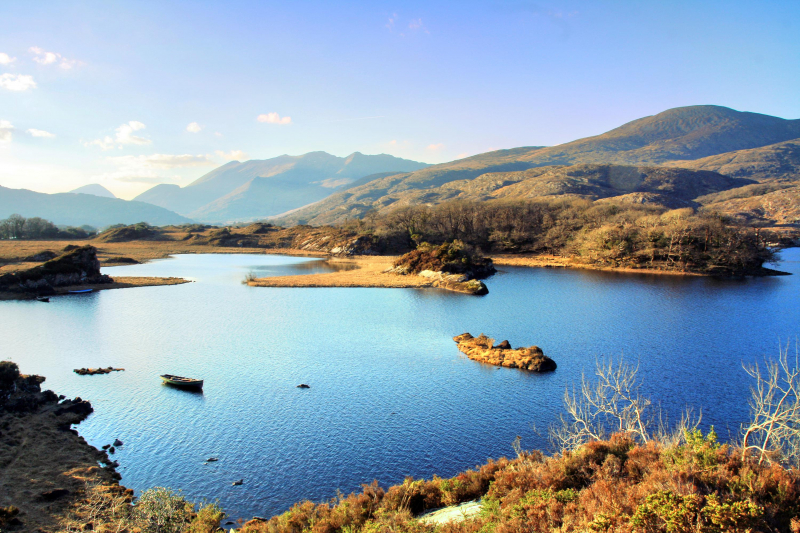
Photo: trip.com 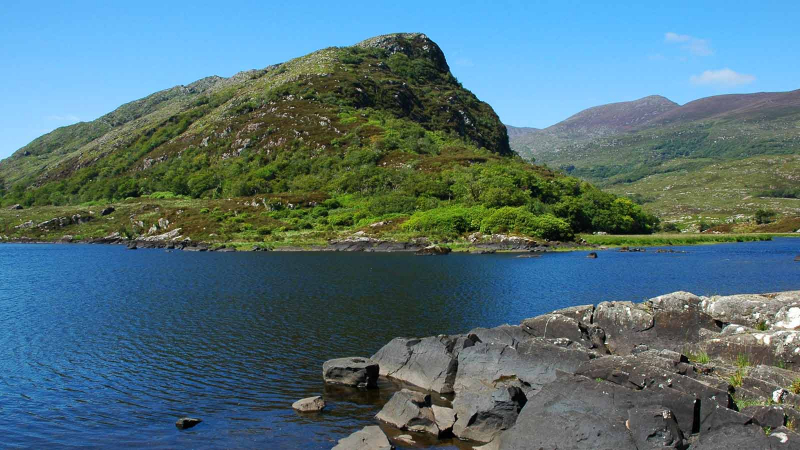
Photo: angelpoeltri.com -
The deepest lake in Europe is located in Norway's fjords, close to one of Scandinavia's most picturesque tourist routes, and surrounded by mountains and glaciers. Hornindalsvatnet, at 514 meters deep, is not only the deepest lake in Europe but also the only one on the continent. By depth, it is ranked 12th in the world. In 2006, a remotely operated underwater vehicle (ROV) sent to examine the lake's deepest point found a new species of fish.
Due to the lake's saline bottom and freshwater top, Hornindalsvatnet is special. The reason for this is that melted snow flows toward the top of the lake while saltwater from the fjords enters from the bottom and settles there. During the warmer months, swimming or canoeing here will allow you to see far into the lake because the water is so clear. The lake freezes over in the winter, creating a breathtaking display of dancing lights.
The lake and its shorelines, with the exception of a few ferry piers, have remained largely untouched in order to preserve natural nature. Nearby villages' history museums, equestrian stables, and Iron Age burial mounds are all surrounded by a network of hiking and cycling trails.Location: Møre og Romsdal and Vestland
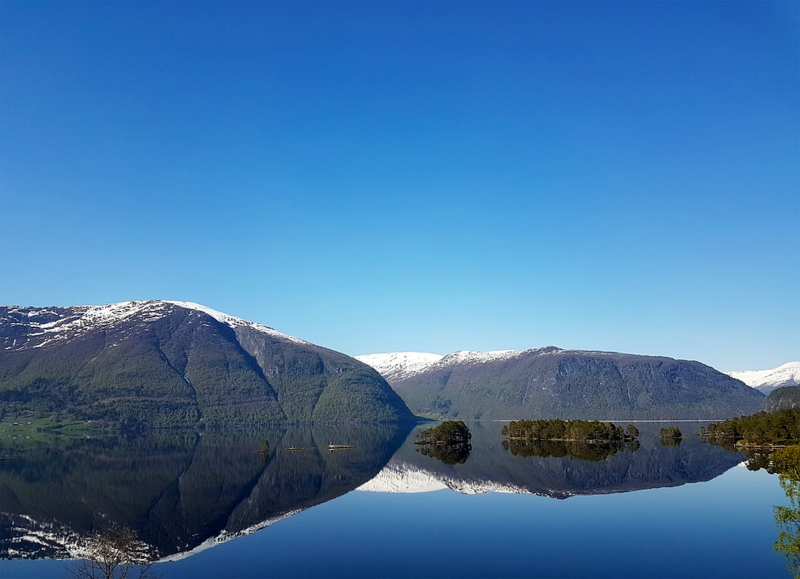
Photo: itinari.com 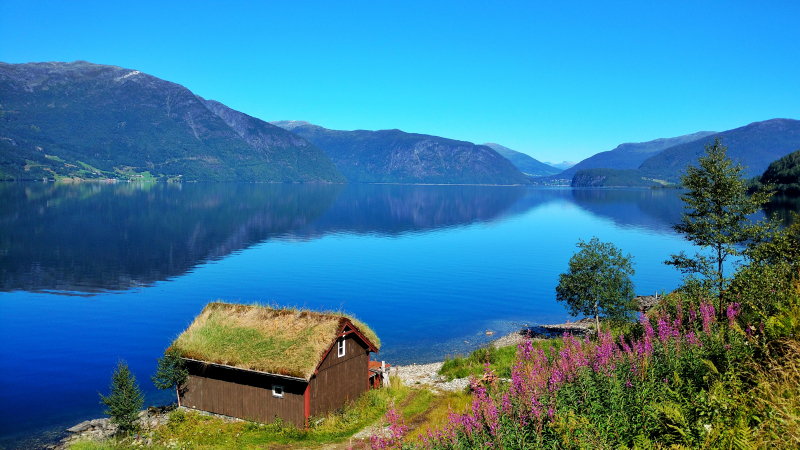
Photo: fonwall.com -
The next position on the list of the most beautiful lakes in Europe is Königssee Lake. A natural lake called the Königssee can be found in the far southeast Berchtesgadener Land region of the German state of Bavaria, close to the Austrian border. In the Berchtesgaden National Park, the lake is located mostly.
The lake and adjacent parklands are particularly well-liked by tourists and hikers because of their attractive location. Additionally, the surrounding sheer granite cliffs produce a crystal-clear echo. It has become customary to pause during boat tours and play a trumpet or flugelhorn to explain the echo. The echo, which was previously shown by firing a cannon, can be heard to reverberate up to seven times. There may appear to be up to seven players since the trumpeter mimics the echo.
The Königssee in Berchtesgadener Land is one of Germany's deepest, cleanest, and most beautiful lakes. Electric boats are used for panorama boat trips across the surface of this glacial lake, which affords visitors breath-taking vistas of the surrounding mountains. The boats dock at Sankt Bartholomä, a stunning 1600s Roman Catholic pilgrimage church.
Location: Schönau am Königssee, Bavaria, Germany
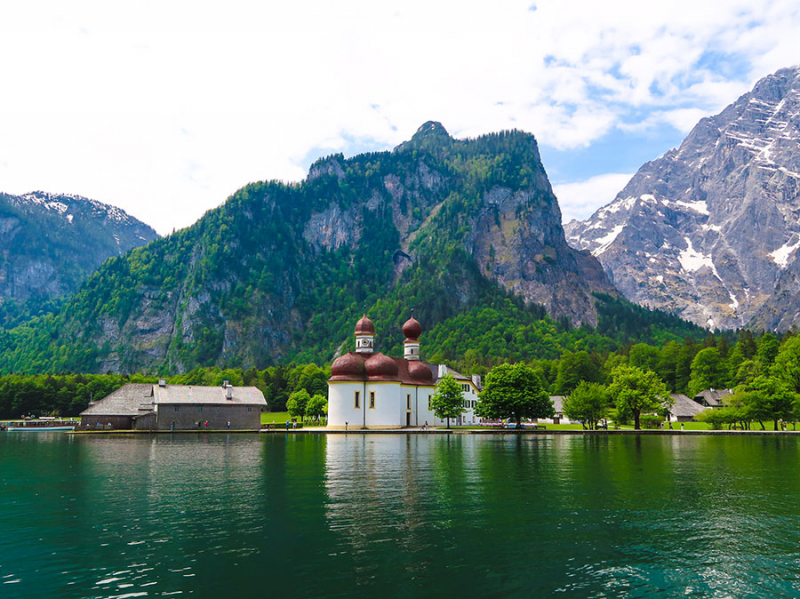
Photo: theglobetrottingdetective.com 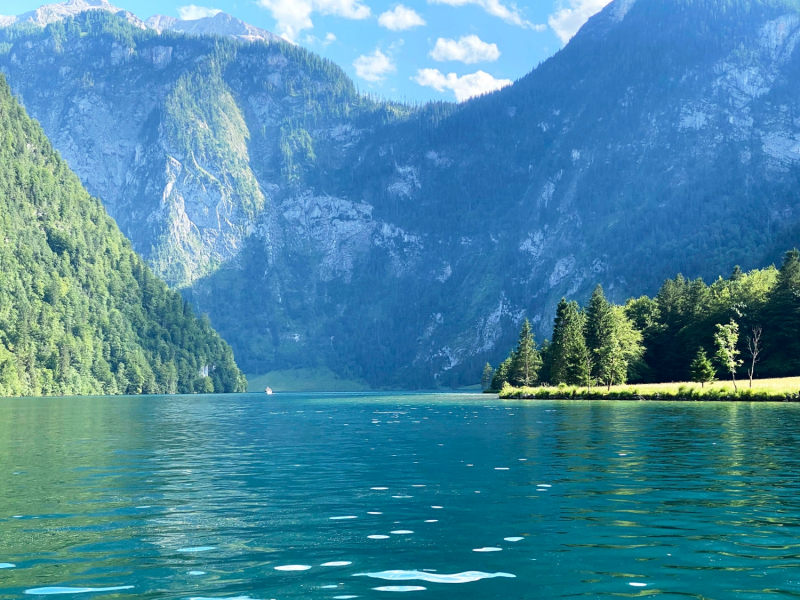
Photo: worthatravel.com -
Lake Ohrid is a lake that spans the hilly boundary between the eastern section of Albania and the southwest corner of North Macedonia. It is one of the deepest and oldest lakes in Europe, with more than 200 endemic species and a distinctive aquatic environment of global significance.
UNESCO designated the northern portion of Lake Ohrid in North Macedonia as a World Heritage Site in 1979. In 1980, the site's boundaries were expanded to include Ohrid's cultural and historical district. One of Titan's lakes was given that name by NASA in 2010. The UNESCO World Network of Biosphere Reserves now includes the Albania-North Macedonia transboundary reserve of Ohrid-Prespa. In 2019, UNESCO recognized the Albanian shore of Lake Ohrid as a world heritage site. The region of North Macedonia was approved as a Ramsar site in 2021 after meeting all nine requirements.
The stunning lake, which is the deepest in the Balkans, spans the border between southwestern North Macedonia and eastern Albania. It enjoys a prestigious location surrounded by majestic mountains and hills and is watched over by the incredibly photogenic Saint John the Theologian Macedonian Orthodox church. Ohrid, a little resort city nearby, is charming and worthwhile seeing. A charming ancient town with cobblestone lanes, medieval cathedrals, monasteries, historical ruins, and homes with red-tiled roofs can be found there.
Location: North Macedonia–Albania border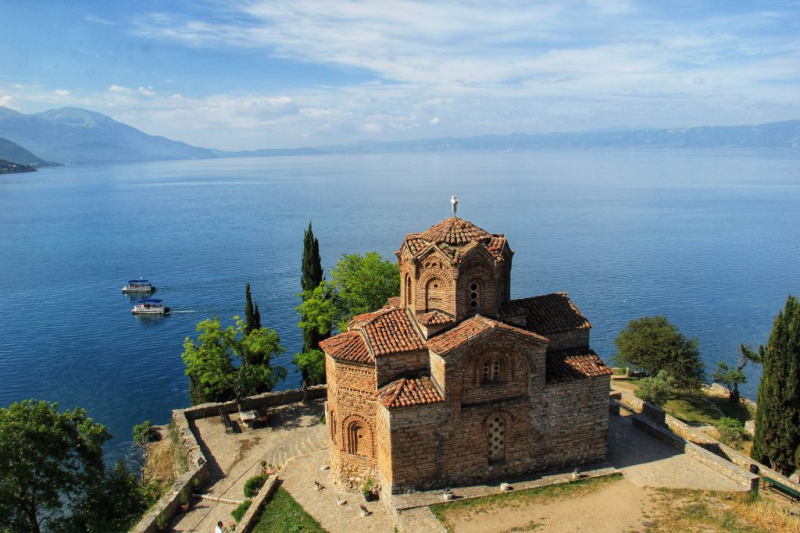
Photo: galloparoundtheglobe.com 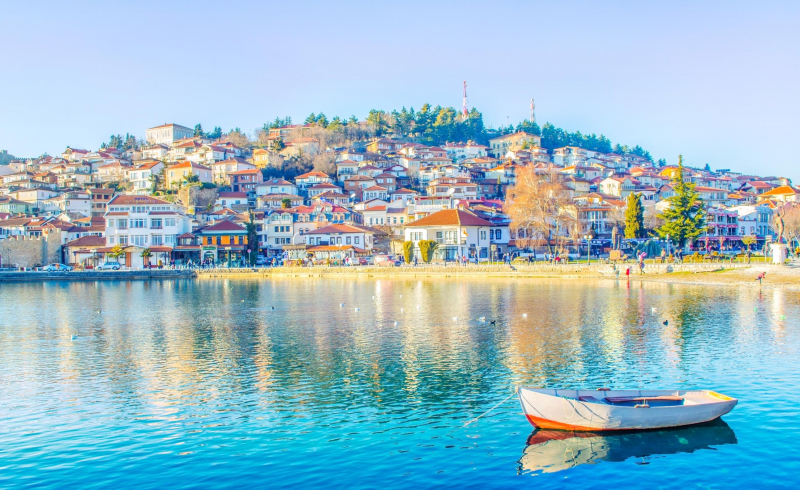
Photo: vn.trip.com















